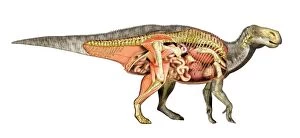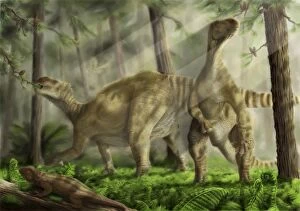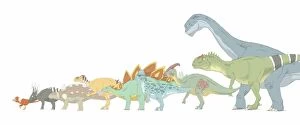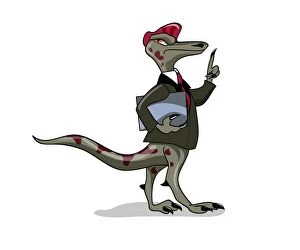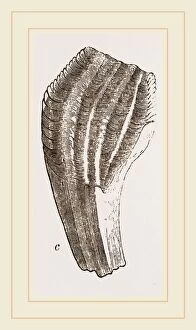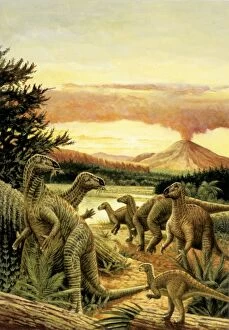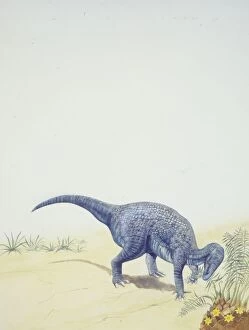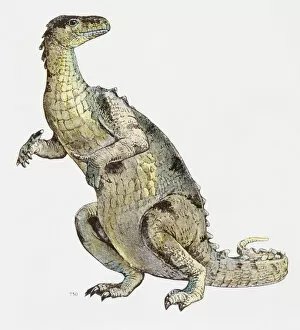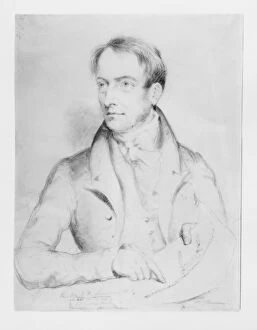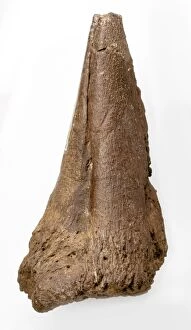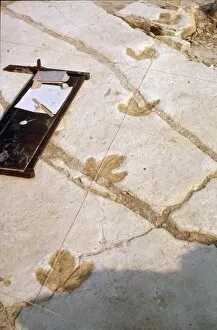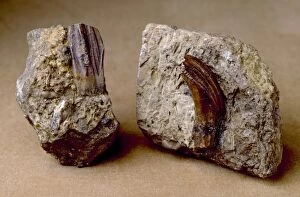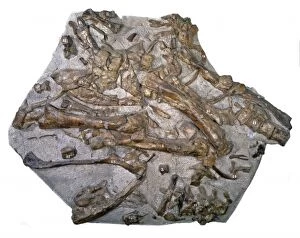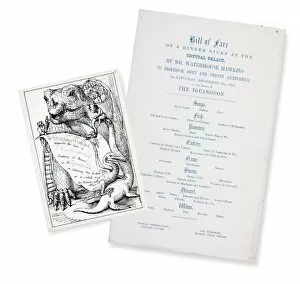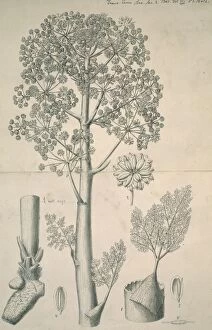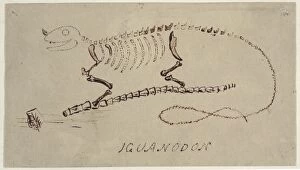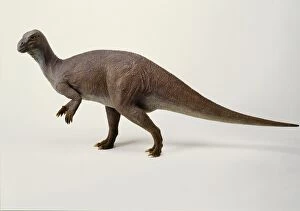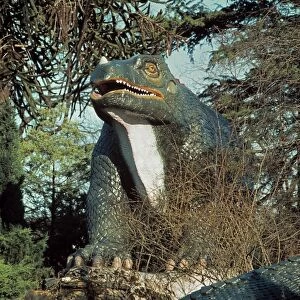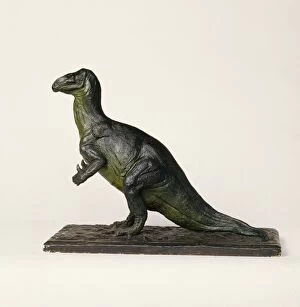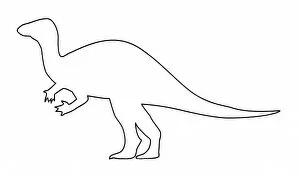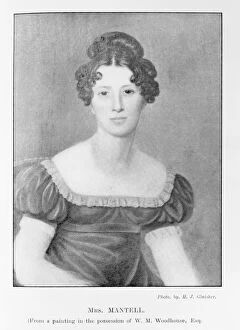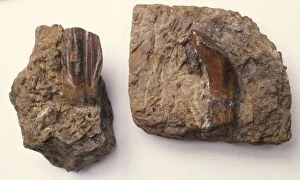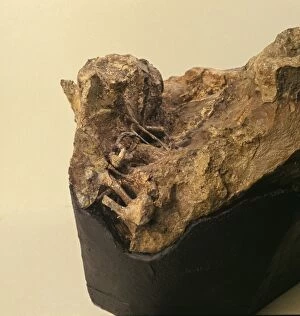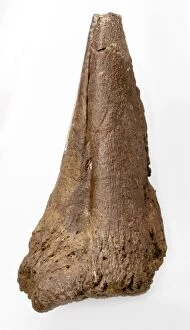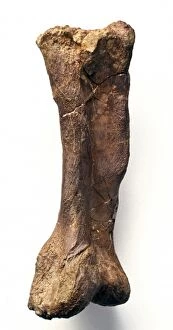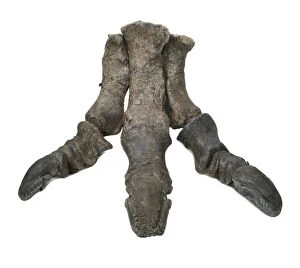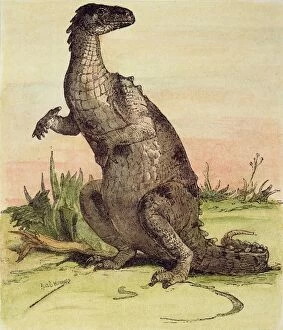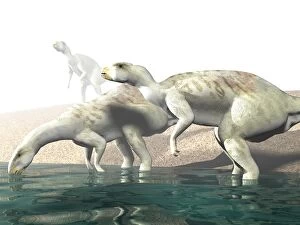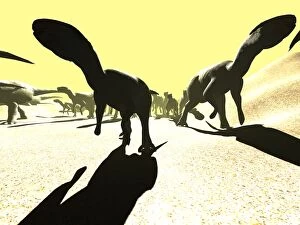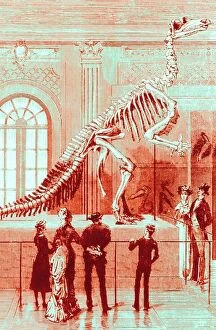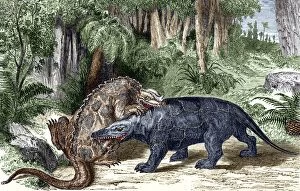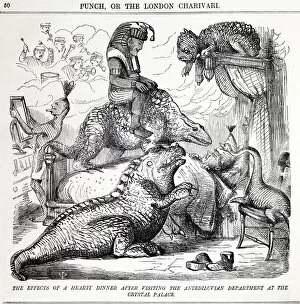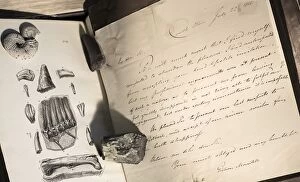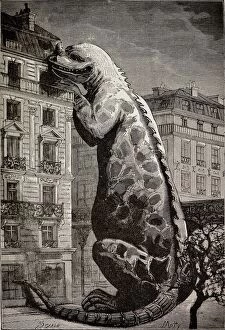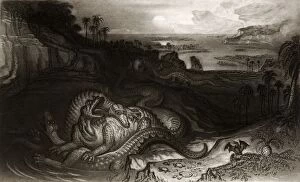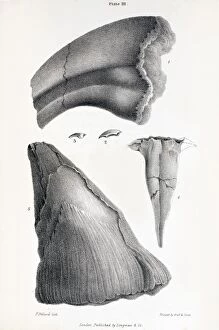Iguanodon Collection (#3)
"Unveiling the Majestic Iguanodon: A Journey through Time and Art" Step into the world of dinosaurs with a visit to Crystal Palace Park in 1854
For sale as Licensed Images
Choose your image, Select your licence and Download the media
"Unveiling the Majestic Iguanodon: A Journey through Time and Art" Step into the world of dinosaurs with a visit to Crystal Palace Park in 1854, where Baxter's stunning rendition of the Iguanodon captivates all who behold it. This herbivorous giant, alongside its fellow dinosaur Hylaeosaurus, showcases the incredible diversity that once roamed our planet. In 1855, Punch Dinosaurs at Crystal Palace continued to amaze spectators as they marveled at Waterhouse Hawkins' lifelike models. The Wealden era comes alive through these restorations, transporting us back millions of years. The year 1862 witnessed an artistic masterpiece depicting Iguanodon and Megalosaurus in action. These awe-inspiring creatures were brought to life by skilled hands and vivid imagination, leaving viewers in awe of their sheer size and power. But let us not forget the man behind the discovery – Gideon Mantell. His tireless efforts led to groundbreaking findings about this magnificent creature. In 1836, he laid eyes on a fossilized jawbone fragment that would change paleontology forever – Mantell Piece sawrian. Mantell's dedication did not stop there; his fused spine discovery in 1852 shed further light on the anatomy of these prehistoric giants. His work paved the way for future research and understanding of dinosaurs like Iguanodon. Fast forward to present day - Dinosaur/Iguanodon Dine offers visitors a chance to immerse themselves in an interactive dining experience surrounded by life-sized replicas, and is here that we can truly appreciate how far our knowledge has come since those early discoveries at Crystal Palace Park over a century ago. So join us on this journey through time as we uncover the fascinating history surrounding one of Earth's most iconic inhabitants - the mighty Iguanodon.

